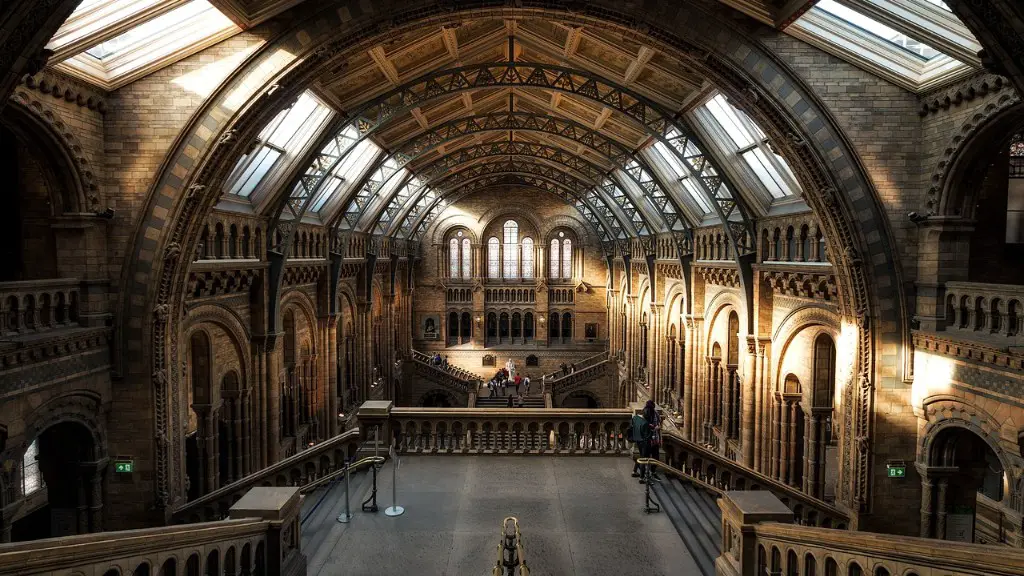Architecture and construction are often intertwined and used interchangeably, but these two disciplines have distinct roles and occasionally findings themselves in conflict with each other. Architecture is the design process that takes into account both the aesthetically pleasing outcome as well as the functional and structural considerations of the project. Architecture will typically draft the building plans and technical design then be handed to a Construction crew to actually complete the task.
Architecture is focused on the design of a structure. Architects take into account both the pressures of creation, i.e. the artistic, aesthetic and inspirational aspects, as well as the pressures of construction, i.e. the economic, environmental and legal aspects. Furthermore, architecture emphasizes the social impact of the space, how it is to be used, the material selected for the buildings and whether light, air, and sound can move freely throughout the space.
Construction, on the other hand, involves the physical building process. Architects will create their design that the Construction crew will then execute. Whether it’s brick, concrete, or steel, the Construction team will be the ones ensuring that the material is laid in the correct way, within budget and that the safety regulations are met. Primary elements of construction include sourcing the materials, acquiring the tools and manpower needed, erecting scaffolding and following the blueprints created by the Architect.
It is the Architect’s responsibility to ensure that solutions are tailored to key planning considerations, such as energy efficiency and use of renewable materials, activity and environmental requirements and adhering to the practical limitations of technology and cost. The Architect serves as the overseer and is responsible for making certain that the Construction crew stays within the established parameters.
It is also the responsibility of the Architect to develop and implement creative solutions that balance the artistic, functional and economical elements if faced with an obstacle. The Construction team is responsible for executing the Architect’s vision. They communicate the plans to subcontractors and laborers, coordinate the use of tools and materials, and oversee daily operations during the building’s construction.
While similarities abound, it is important to understand the key differences between Architecture and Construction. Both Architecture and Construction can be beautiful, but it requires close collaboration between these two disciplines to achieve a result that not only functions effectively, but also inspire and delights visually.
Building Regulations
When planning any type of building, architects must make sure that their plans are in accordance with the relevant building regulations set by the government. Building regulations have been established to ensure that all the necessary safety requirements are met. There are security protocols in buildings to ensure the safety of those inside.
Building regulations are concerned with aspects of design such as fire safety, security features and door widths. These regulations ensure that all buildings meet the current standards. Architects must also consider elements in buildings such as energy efficiency and sustainability.
In the UK, building regulations are mainly administered by local government: the Town and Country Planning Act of 1947 states that all buildings must comply with these regulations along with the different Acts of Parliament for the construction of buildings in the UK. Architects must work within these regulations to design building plans.
Architects are generally consulted at the early stages of a construction project by the general contractor to help plan the scaffolding and support structures. This is to ensure that the architect’s plans for the building are approved and are built according to the regulations.
Construction teams then use the blueprints and designs from the architects to build the structures as per the regulations. It is the job of the construction team to ensure that the building is of sound structure, safe to use and to the highest of standards.
Environmental Considerations
Architects must consider the environmental impact of the buildings they design. Environmentally awareness must be taken into account, such as the use of low-energy materials or sustainable building practices, when designing a building.
Construction teams also have a crucial role in ensuring a building is environmentally conscious. They must use renewable and low-energy materials and use sustainable practices when constructing the building. The construction team must be able to adapt and use green solutions in order to make sure the building is of sound structure and utilizes the most eco-friendly materials.
Architects need to be familiar with the codes for energy efficiency and understand how their designs can reduce the building’s overall carbon footprint. They must also be mindful of the building’s environmental impact and recommend greener, sustainable building practices to the construction team.
Construction teams must also ensure that the building is constructed to the highest standard and that safety and environmental regulations are adhered to. The construction team must be familiar with local and federal codes and regulations, such as LEED (Leadership in Energy and Environmental Design), in order to build a structure that meets the architectural and regulatory standards.
Project Management
Project management is essential when tackling any construction project. Architects must devise a plan for the project that takes into account the budget, timeline and completion date, and any other necessary considerations. The project manager is in charge of overseeing the entire project, from conception to completion.
It is the job of the construction team to make sure that the project follows the plan and is completed on time and to the required quality standards. They do this by delegating tasks to subcontractors and laborers, securing the necessary resources and tools, and coordinating all activities related to the construction phase. The construction manager is responsible for managing the project, monitoring progress and quality of work, and ensuring that the construction goals are met on time and within the predetermined budget.
The project manager is responsible for ensuring the smooth running of the project and ensuring that the higher quality standards are followed throughout the duration of the project. They must be able to identify any potential issues or risks and have the right strategies in place to combat them. The project manager must also be able to motivate and keep the construction team on track.
Roles and Responsibilities
Architects and Construction crews both have a wide range of roles and responsibilities when it comes to designing and constructing a building. Architects are responsible for creating the design, devising the plans, sourcing materials and tools and hiring laborers. They must also ensure that the plans meet all necessary regulations and codes for the building. Construction crews are responsible for executing the plans, managing resources and tools, and ensuring that all safety and environmental regulations are followed.
Architects must have a strong understanding of the physics of building and construction and a detailed knowledge of relevant building codes and regulations. They must be creative and be able to develop solutions that balance the aesthetically pleasing outcome with the practical and functional elements of the project. Construction teams need an in-depth understanding of construction techniques and the ability to safely manage resources and tools.
Both Architecture and Construction share a common goal – to construct safe, functional and beautiful buildings. Therefore, close collaboration is essential between both disciplines to ensure that the project is completed on time and to its highest possible standard.





